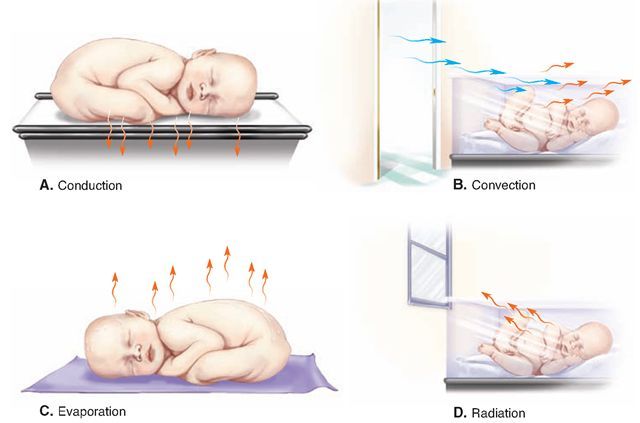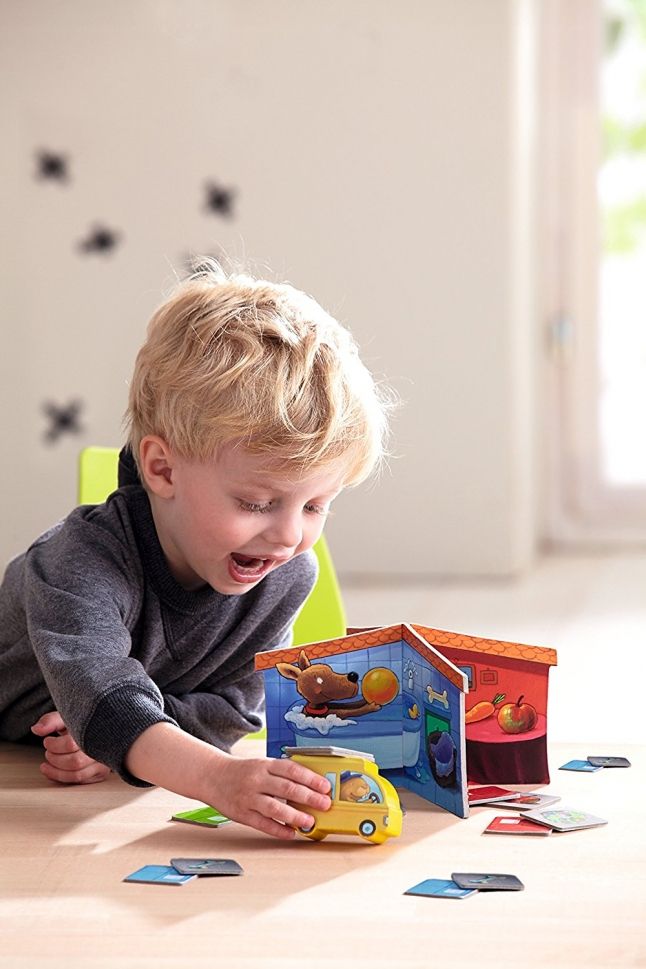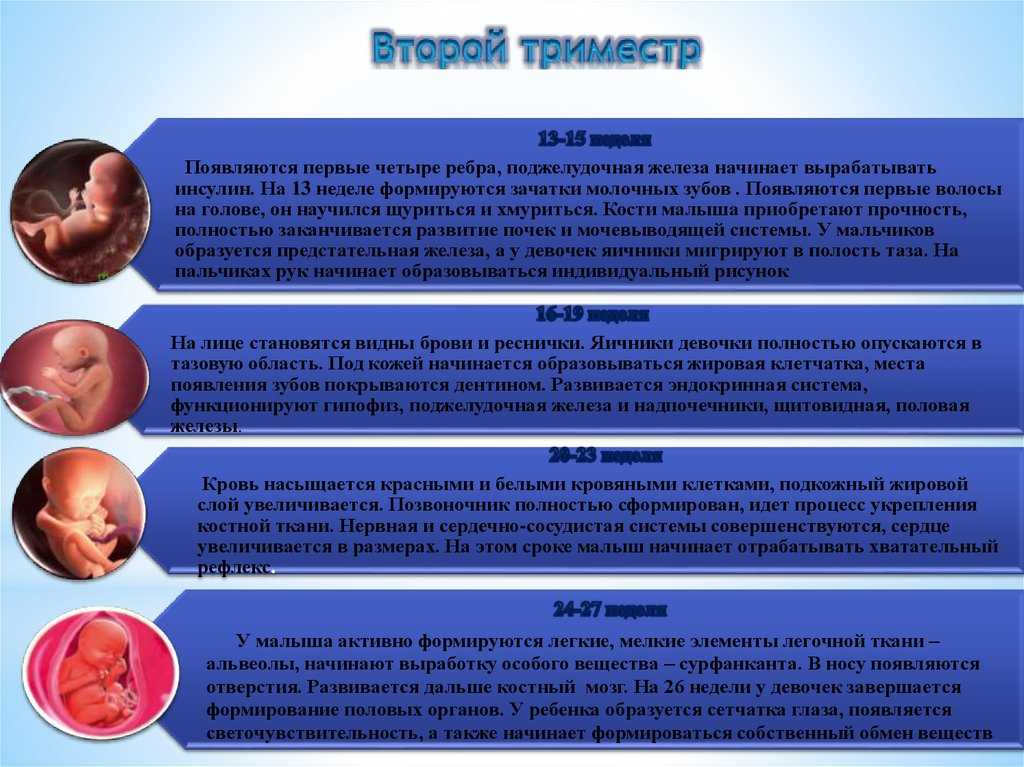How does the amber necklace work
The Truth About the Safety of Amber Teething Necklaces
Teething can be really tough on babies (and parents). Like all tricky stages of development, it doesn’t last forever, but that’s little comfort at 2 a.m. as you scramble around in the dark trying to find a dropped teething toy for the eighth time that night. You may understandably be willing to try almost any solution for those sore gums that have kept baby awake and distressed for the third night in a row.
It’s highly likely that at some point, a well-meaning friend or search engine will recommend buying an amber teething necklace for baby while those little teeth work their way through. At first glance, a Baltic amber teething necklace might have some appeal as a natural alternative to conventional teething medicine. But with unconvincing science, dubious claims to success and significant safety risks, is an amber baby teething necklace something you really want in your baby kit? Keep reading to learn what two pediatricians have to say.
In this article:
What is an amber teething necklace?
How do amber teething necklaces work?
Do amber teething necklaces work?
Amber teething necklace safety concerns
Alternative teething methods to an amber teething necklace
What Is an Amber Teething Necklace?
First of all, amber isn’t really a true gemstone—it’s actually fossilized tree resin. Most amber teething necklaces are made from either raw or heat-treated and polished Baltic amber beads, which are strung together and individually knotted. The necklace can then be placed around baby’s neck (though doing so poses a whole host of safety issues). “Amber teething necklaces are made of amber and are marketed to relieve teething pain. Sellers of the necklaces make claims that when warmed by baby’s body temperature, the amber releases a pain-relieving substance that’s absorbed by the child and helps with teething pain,” says Dina DiMaggio, MD, a New York City-based pediatrician and clinical assistant professor of pediatrics at NYU Grossman School of Medicine.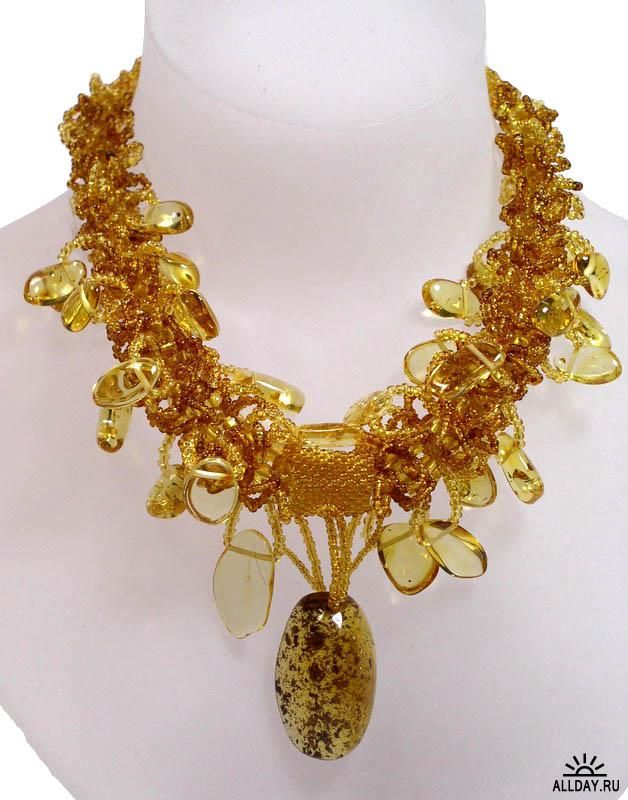
Some people believe the soothing properties come from the presence of succinic acid, a natural substance that’s said to act as a painkiller when absorbed by the body. The highest concentration of succinic acid is in the outer layers of the resin, which is why some people prefer the raw amber teething necklace to heat-treated, which strips away the outer layer of resin during the polishing process.
How Do Amber Teething Necklaces Work?
The belief that amber beads can relieve teething pain is largely based on the fact that Baltic amber contains succinic acid that, when absorbed by baby’s body, helps to soothe sore and swollen gums. Retailers also claim the beads can stimulate the thyroid gland and, consequently, control drool and improve the immune system’s ability to reduce inflammation in the ears, throat, stomach and respiratory system, explains Texas-based pediatrician Alexis Phillips-Walker, DO. To date, however, there has been no scientific evidence or research to back up these claims.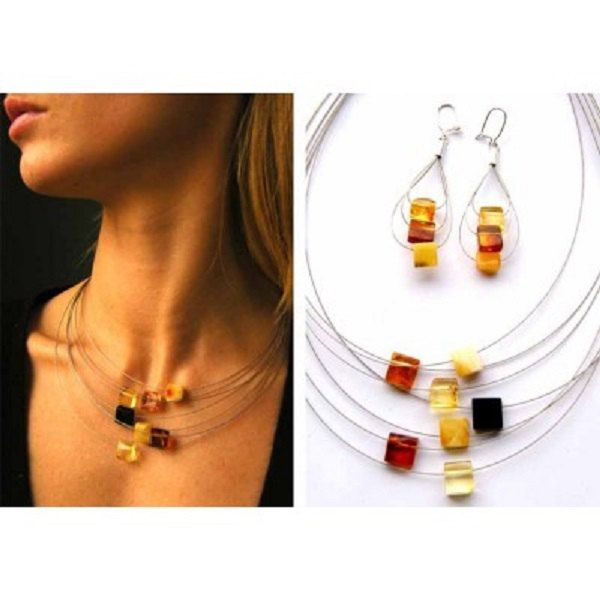
Do Amber Teething Necklaces Work?
With the recent surge in popularity of Baltic amber teething beads, many people are convinced that their amber baby teething necklace has solved their child’s teething problems. You can find plenty of anecdotal evidence after a simple Google search, but medical experts caution that these necklaces are not safe and effective. According to the American Academy of Pediatrics (AAP), the claims of amber teething necklaces are not supported by any scientific research or evidence.
A common misconception around Baltic amber teething necklaces is that the amber beads themselves are designed for baby to bite on, which isn’t the case. In fact, an amber teething necklace is only meant to be worn by baby so that the succinic acid can be absorbed by baby’s skin. While this key element is indeed present in amber, there is little evidence that it would be released when warmed to baby’s body temperature. Even if the succinic acid is drawn out by baby’s warmth, there is simply not enough of it within the amber teething necklace to successfully pass through the skin and into the body in a large enough concentration to do any healing work.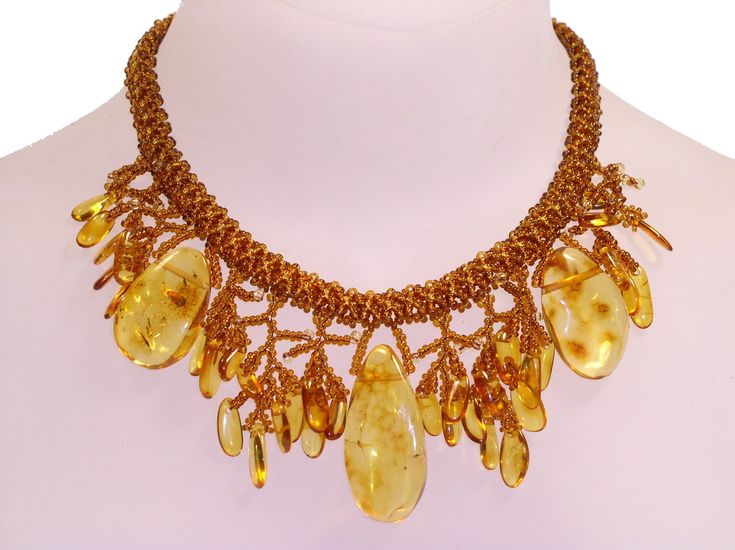 And even if there was, the necklaces simply aren’t worth the risk they pose to infants. Wondering what those are? Read on.
And even if there was, the necklaces simply aren’t worth the risk they pose to infants. Wondering what those are? Read on.
Amber Teething Necklace Safety Concerns
Many parents recoil from the idea of putting jewelry—especially necklaces—on babies because of choking and strangulation risks. Manufacturers of amber teething necklaces claim that their products are safe because they knotting each bead separately or design the necklace to snap if pulled too hard, thus reducing the risk of strangulation. However, even if they’re individually knotted, if the thread breaks, baby will be able to pick up at least one bead and put it in their mouth—and many say that’s just one too many. Other companies have tried to quell parents’ fear of baby choking by selling amber teething beads to be worn around the wrist or ankle. But this arguably makes it even easier for babies to grab and pull at the anklet or bracelet and break the thread.
“Amber teething necklaces are dangerous and not recommended by pediatricians,” DiMaggio says.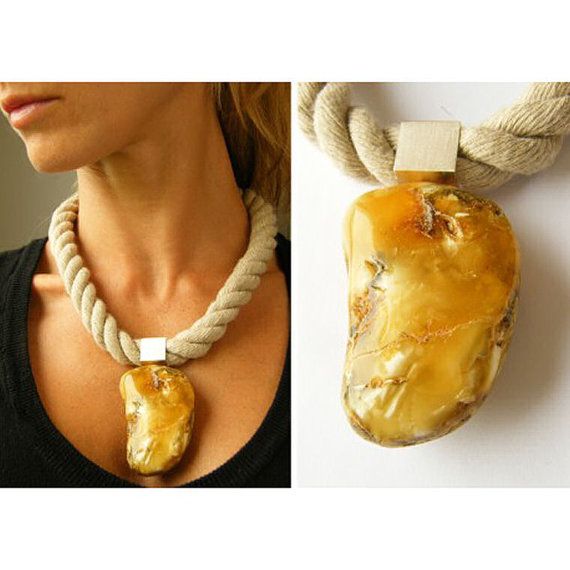 “The FDA released a warning in December 2018 after receiving reports of children choking on beads that break off and even the death of a toddler being strangled by the necklace while sleeping.”
“The FDA released a warning in December 2018 after receiving reports of children choking on beads that break off and even the death of a toddler being strangled by the necklace while sleeping.”
Back in 2010, the Canadian federal public health department released cautionary guidance about amber teething necklaces, and Ireland took an even more assertive line in 2015, with the Health Service Executive referring to amber teething necklaces as being “inherently unsafe.” In 2016, the American Academy of Pediatrics issued their own warning, stating that they advise against infants wearing jewelry of any kind.
Alternative Teething Methods to an Amber Teething Necklace
There are so many alternative teething relief options that you can provide for your child without the risk that an amber baby teething necklace carries. From over-the-counter preparations to homespun natural remedies and safety-tested teething toys, there’s something out there to suit your child that comes with no dangerous risks attached.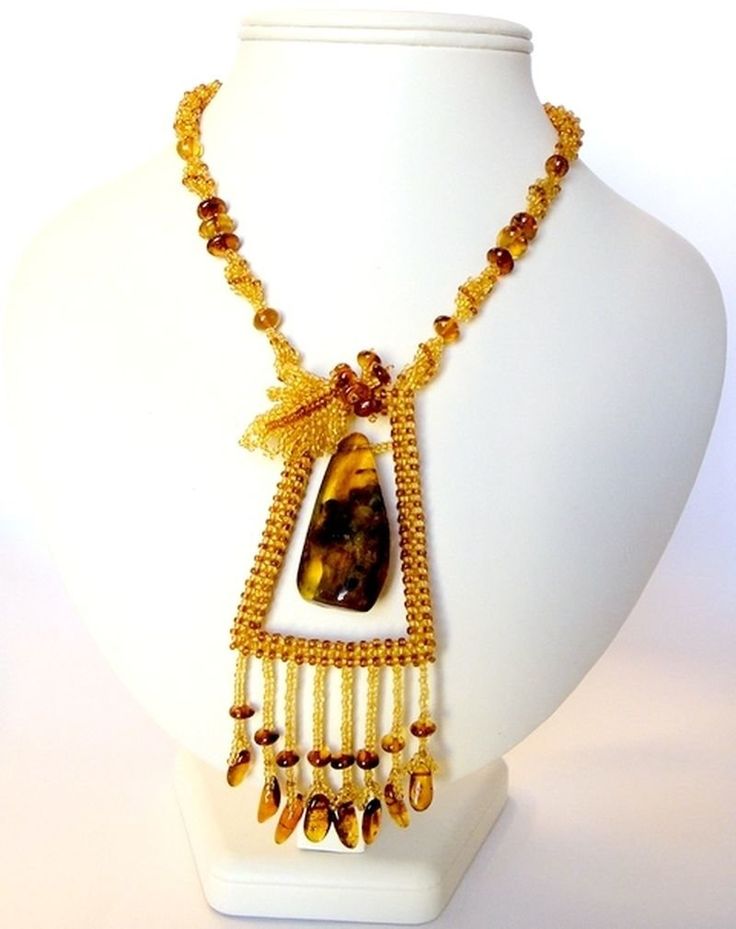
“Try cold items on gums such as a frozen, damp washcloth or semi-frozen teething rings. Teething rings that are frozen solid are too hard for babies,” Phillips-Walker says. She also recommends parents use chew toys and rubber teething rings, or, if approved by your pediatrician, a dose of acetaminophen (Tylenol). When it comes to numbing gels, though, you want to avoid ones with benzocaine to avoid poisoning younger children, she adds. Another option is to massage baby’s gums with your (clean) fingers.
About the Experts:
Dina DiMaggio, MD, a spokesperson for the American Academy of Pediatrics, is a pediatrician with Pediatric Associates of NYC and a clinical assistant professor in the department of pediatrics at NYU Grossman School of Medicine in New York City. She is also the co-author of The Pediatrician’s Guide to Feeding Babies and Toddlers: Practical Answers to Your Questions on Nutrition, Starting Solids, Allergies, Picky Eating and More.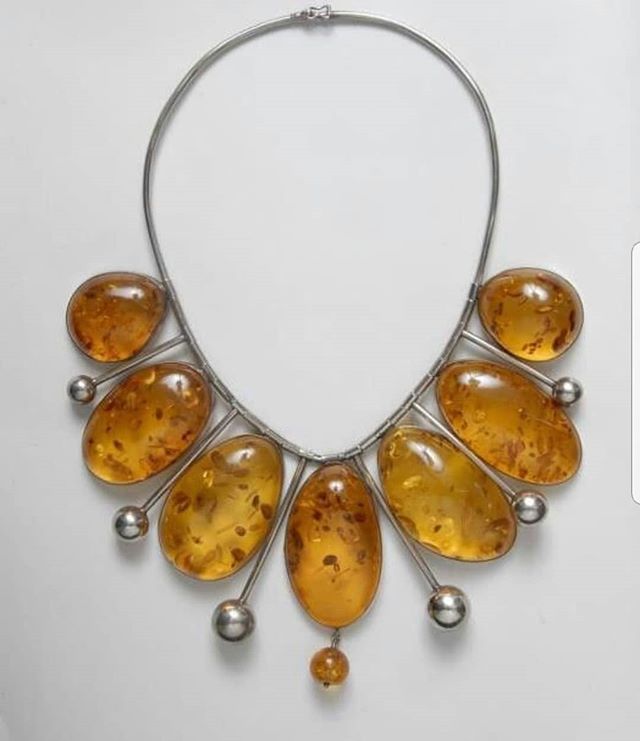 She earned her medical degree from Albert Einstein College of Medicine in 2002.
She earned her medical degree from Albert Einstein College of Medicine in 2002.
Alexis Phillips, DO, is a pediatrician with Memorial Hermann Medical Group Pediatrics Atascocita in Atascocita, Texas. She is a graduate of Ohio University Heritage College of Osteopathic Medicine.
Please note: The Bump and the materials and information it contains are not intended to, and do not constitute, medical or other health advice or diagnosis and should not be used as such. You should always consult with a qualified physician or health professional about your specific circumstances.
Plus, more from The Bump:
Teething Symptoms and Remedies: What You Need to Know
Teething Necklaces Moms Can Wear to Soothe Baby’s Gums
The Truth About Teething Tablet Safety
The Truth About the Safety of Amber Teething Necklaces
Teething can be really tough on babies (and parents). Like all tricky stages of development, it doesn’t last forever, but that’s little comfort at 2 a.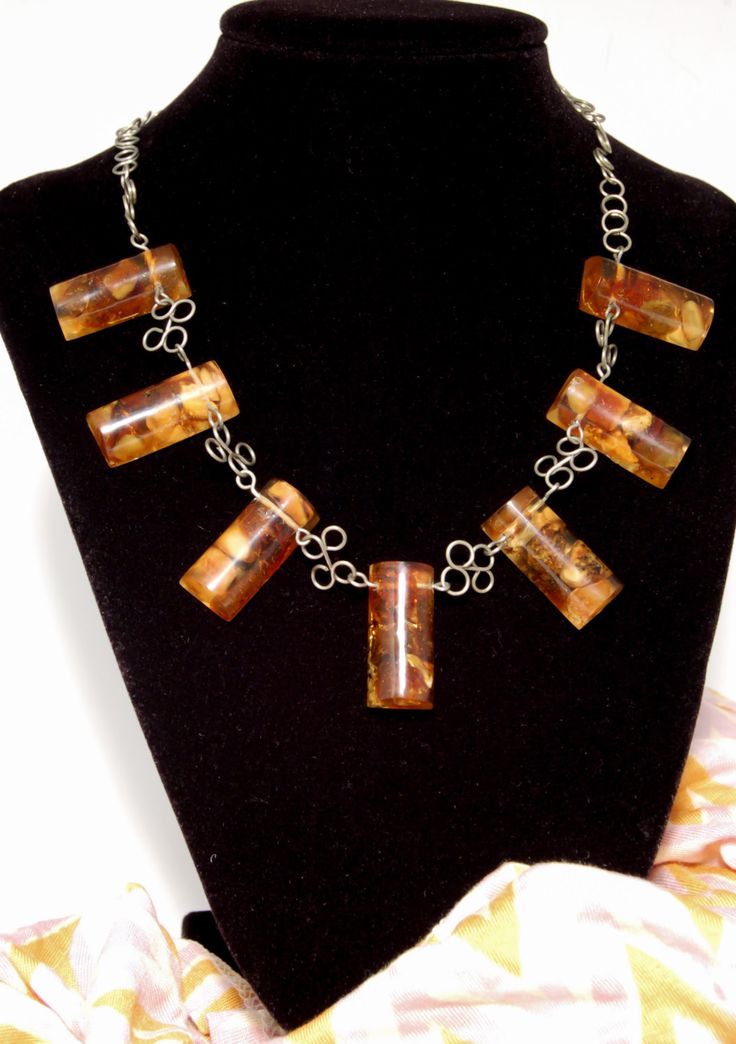 m. as you scramble around in the dark trying to find a dropped teething toy for the eighth time that night. You may understandably be willing to try almost any solution for those sore gums that have kept baby awake and distressed for the third night in a row.
m. as you scramble around in the dark trying to find a dropped teething toy for the eighth time that night. You may understandably be willing to try almost any solution for those sore gums that have kept baby awake and distressed for the third night in a row.
It’s highly likely that at some point, a well-meaning friend or search engine will recommend buying an amber teething necklace for baby while those little teeth work their way through. At first glance, a Baltic amber teething necklace might have some appeal as a natural alternative to conventional teething medicine. But with unconvincing science, dubious claims to success and significant safety risks, is an amber baby teething necklace something you really want in your baby kit? Keep reading to learn what two pediatricians have to say.
In this article:
What is an amber teething necklace?
How do amber teething necklaces work?
Do amber teething necklaces work?
Amber teething necklace safety concerns
Alternative teething methods to an amber teething necklace
What Is an Amber Teething Necklace?
First of all, amber isn’t really a true gemstone—it’s actually fossilized tree resin. Most amber teething necklaces are made from either raw or heat-treated and polished Baltic amber beads, which are strung together and individually knotted. The necklace can then be placed around baby’s neck (though doing so poses a whole host of safety issues). “Amber teething necklaces are made of amber and are marketed to relieve teething pain. Sellers of the necklaces make claims that when warmed by baby’s body temperature, the amber releases a pain-relieving substance that’s absorbed by the child and helps with teething pain,” says Dina DiMaggio, MD, a New York City-based pediatrician and clinical assistant professor of pediatrics at NYU Grossman School of Medicine.
Most amber teething necklaces are made from either raw or heat-treated and polished Baltic amber beads, which are strung together and individually knotted. The necklace can then be placed around baby’s neck (though doing so poses a whole host of safety issues). “Amber teething necklaces are made of amber and are marketed to relieve teething pain. Sellers of the necklaces make claims that when warmed by baby’s body temperature, the amber releases a pain-relieving substance that’s absorbed by the child and helps with teething pain,” says Dina DiMaggio, MD, a New York City-based pediatrician and clinical assistant professor of pediatrics at NYU Grossman School of Medicine.
Some people believe the soothing properties come from the presence of succinic acid, a natural substance that’s said to act as a painkiller when absorbed by the body. The highest concentration of succinic acid is in the outer layers of the resin, which is why some people prefer the raw amber teething necklace to heat-treated, which strips away the outer layer of resin during the polishing process.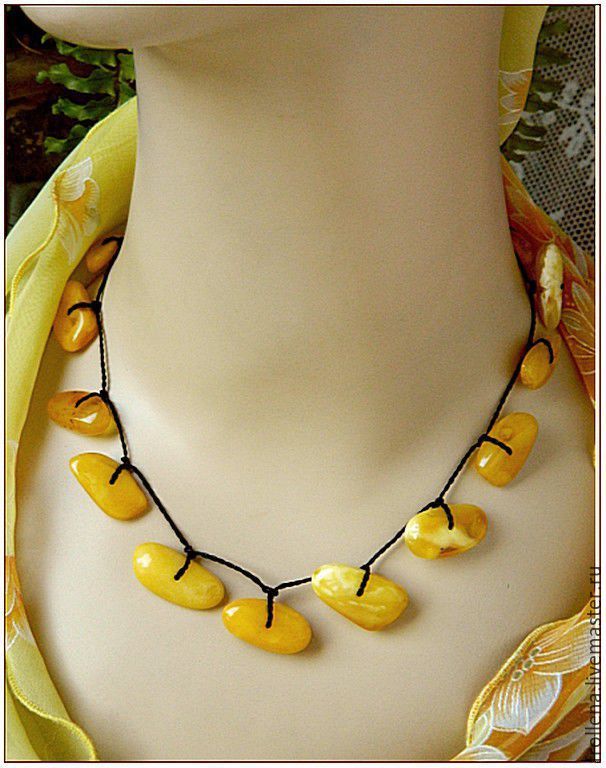
How Do Amber Teething Necklaces Work?
The belief that amber beads can relieve teething pain is largely based on the fact that Baltic amber contains succinic acid that, when absorbed by baby’s body, helps to soothe sore and swollen gums. Retailers also claim the beads can stimulate the thyroid gland and, consequently, control drool and improve the immune system’s ability to reduce inflammation in the ears, throat, stomach and respiratory system, explains Texas-based pediatrician Alexis Phillips-Walker, DO. To date, however, there has been no scientific evidence or research to back up these claims.
Do Amber Teething Necklaces Work?
With the recent surge in popularity of Baltic amber teething beads, many people are convinced that their amber baby teething necklace has solved their child’s teething problems. You can find plenty of anecdotal evidence after a simple Google search, but medical experts caution that these necklaces are not safe and effective.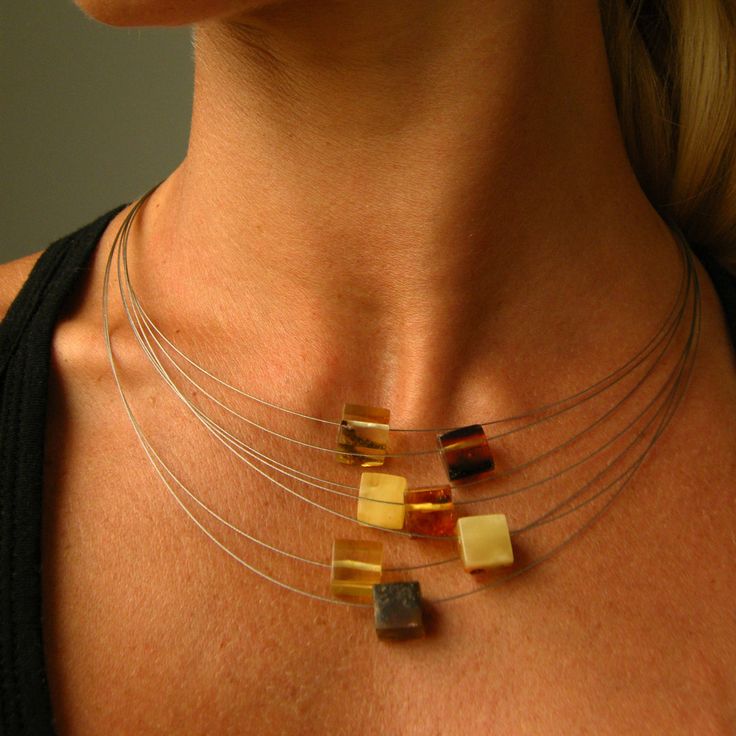 According to the American Academy of Pediatrics (AAP), the claims of amber teething necklaces are not supported by any scientific research or evidence.
According to the American Academy of Pediatrics (AAP), the claims of amber teething necklaces are not supported by any scientific research or evidence.
A common misconception around Baltic amber teething necklaces is that the amber beads themselves are designed for baby to bite on, which isn’t the case. In fact, an amber teething necklace is only meant to be worn by baby so that the succinic acid can be absorbed by baby’s skin. While this key element is indeed present in amber, there is little evidence that it would be released when warmed to baby’s body temperature. Even if the succinic acid is drawn out by baby’s warmth, there is simply not enough of it within the amber teething necklace to successfully pass through the skin and into the body in a large enough concentration to do any healing work. And even if there was, the necklaces simply aren’t worth the risk they pose to infants. Wondering what those are? Read on.
Amber Teething Necklace Safety Concerns
Many parents recoil from the idea of putting jewelry—especially necklaces—on babies because of choking and strangulation risks.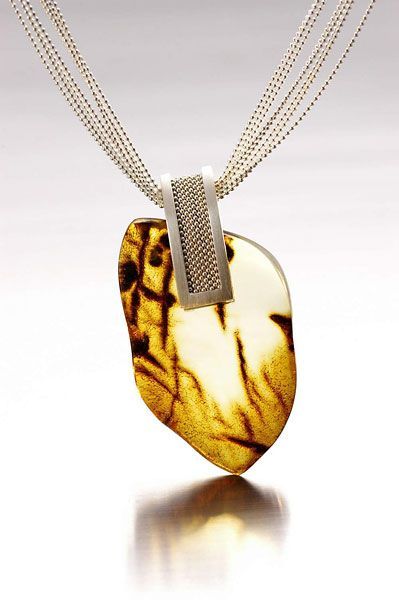 Manufacturers of amber teething necklaces claim that their products are safe because they knotting each bead separately or design the necklace to snap if pulled too hard, thus reducing the risk of strangulation. However, even if they’re individually knotted, if the thread breaks, baby will be able to pick up at least one bead and put it in their mouth—and many say that’s just one too many. Other companies have tried to quell parents’ fear of baby choking by selling amber teething beads to be worn around the wrist or ankle. But this arguably makes it even easier for babies to grab and pull at the anklet or bracelet and break the thread.
Manufacturers of amber teething necklaces claim that their products are safe because they knotting each bead separately or design the necklace to snap if pulled too hard, thus reducing the risk of strangulation. However, even if they’re individually knotted, if the thread breaks, baby will be able to pick up at least one bead and put it in their mouth—and many say that’s just one too many. Other companies have tried to quell parents’ fear of baby choking by selling amber teething beads to be worn around the wrist or ankle. But this arguably makes it even easier for babies to grab and pull at the anklet or bracelet and break the thread.
“Amber teething necklaces are dangerous and not recommended by pediatricians,” DiMaggio says. “The FDA released a warning in December 2018 after receiving reports of children choking on beads that break off and even the death of a toddler being strangled by the necklace while sleeping.”
Back in 2010, the Canadian federal public health department released cautionary guidance about amber teething necklaces, and Ireland took an even more assertive line in 2015, with the Health Service Executive referring to amber teething necklaces as being “inherently unsafe.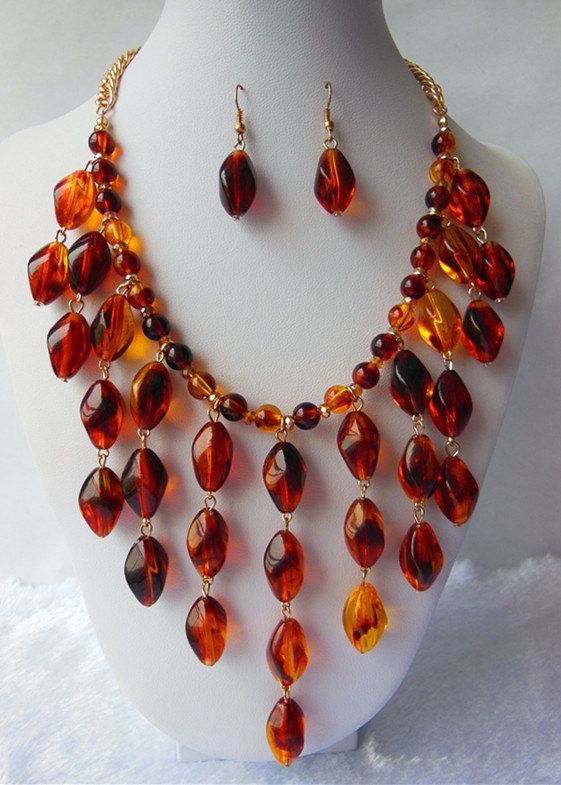 ” In 2016, the American Academy of Pediatrics issued their own warning, stating that they advise against infants wearing jewelry of any kind.
” In 2016, the American Academy of Pediatrics issued their own warning, stating that they advise against infants wearing jewelry of any kind.
Alternative Teething Methods to an Amber Teething Necklace
There are so many alternative teething relief options that you can provide for your child without the risk that an amber baby teething necklace carries. From over-the-counter preparations to homespun natural remedies and safety-tested teething toys, there’s something out there to suit your child that comes with no dangerous risks attached.
“Try cold items on gums such as a frozen, damp washcloth or semi-frozen teething rings. Teething rings that are frozen solid are too hard for babies,” Phillips-Walker says. She also recommends parents use chew toys and rubber teething rings, or, if approved by your pediatrician, a dose of acetaminophen (Tylenol). When it comes to numbing gels, though, you want to avoid ones with benzocaine to avoid poisoning younger children, she adds.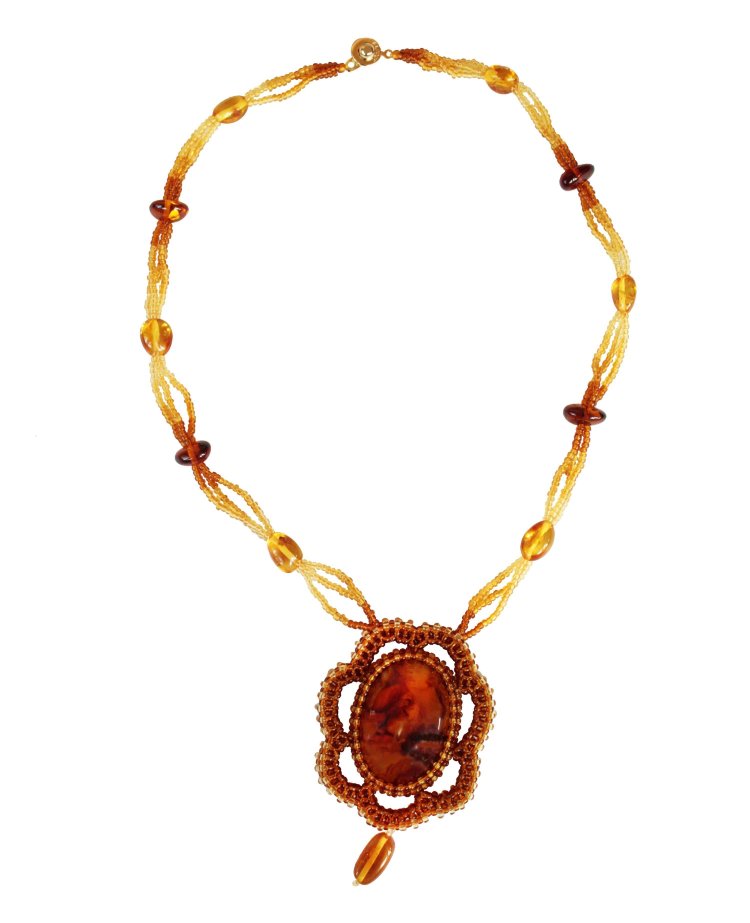 Another option is to massage baby’s gums with your (clean) fingers.
Another option is to massage baby’s gums with your (clean) fingers.
About the Experts:
Dina DiMaggio, MD, a spokesperson for the American Academy of Pediatrics, is a pediatrician with Pediatric Associates of NYC and a clinical assistant professor in the department of pediatrics at NYU Grossman School of Medicine in New York City. She is also the co-author of The Pediatrician’s Guide to Feeding Babies and Toddlers: Practical Answers to Your Questions on Nutrition, Starting Solids, Allergies, Picky Eating and More. She earned her medical degree from Albert Einstein College of Medicine in 2002.
Alexis Phillips, DO, is a pediatrician with Memorial Hermann Medical Group Pediatrics Atascocita in Atascocita, Texas. She is a graduate of Ohio University Heritage College of Osteopathic Medicine.
Please note: The Bump and the materials and information it contains are not intended to, and do not constitute, medical or other health advice or diagnosis and should not be used as such.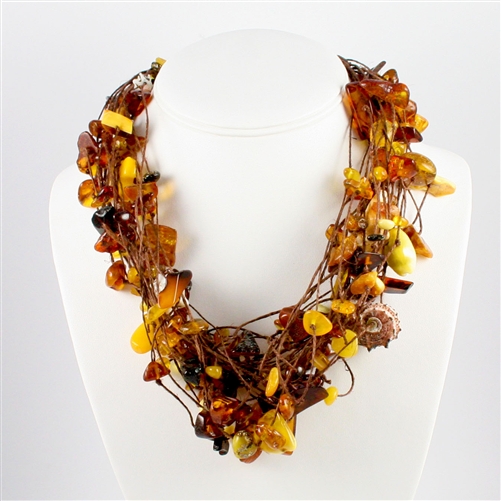 You should always consult with a qualified physician or health professional about your specific circumstances.
You should always consult with a qualified physician or health professional about your specific circumstances.
Plus, more from The Bump:
Teething Symptoms and Remedies: What You Need to Know
Teething Necklaces Moms Can Wear to Soothe Baby’s Gums
The Truth About Teething Tablet Safety
natural Baltic amber phenomenon ❤️ KIDY.eu
- Amber - the power of the sun in every piece
- Amber beads - healing properties
- Amber - interesting facts
- Baby amber teething beads - how does it work?
- Where to buy amber beads?
Long before a child appears in the house, while still in a wonderful position, every woman strives to change the life of her family in the direction of natural and useful. When the smallest and most important member of the family appears, then you want everything around, everything that concerns the baby, to be the most useful, the most natural. And if with regards to clothing, food and toys everything is more or less clear, then what about when the first problems and misunderstandings with the health of the crumbs appear? Infant colic is just coming to an end, as some early babies already have teeth on the way. The process of teething in babies is usually very difficult, both for the child himself and for the parents, and can be accompanied by severe pain and a rise in temperature, and then medicines come into play - painkillers and antipyretics, and sometimes sedatives.
The process of teething in babies is usually very difficult, both for the child himself and for the parents, and can be accompanied by severe pain and a rise in temperature, and then medicines come into play - painkillers and antipyretics, and sometimes sedatives.
For those parents who want to minimize the use of chemical drugs, there is an old version - amber teething beads. Very often, such amber beads become a relic in the family and are passed from one generation to another.
Amber teething beads are a very popular method of pain relief and anxiety relief in children throughout Europe. Baltic amber is traditionally the best and most useful material for making such beads and bracelets. Baby amber beads are a wonderful gift, both for the christening of a child, and for any other important event in a family where there is a baby of the right age.
Before you buy baby amber teething beads, you should understand how they work and how to use them.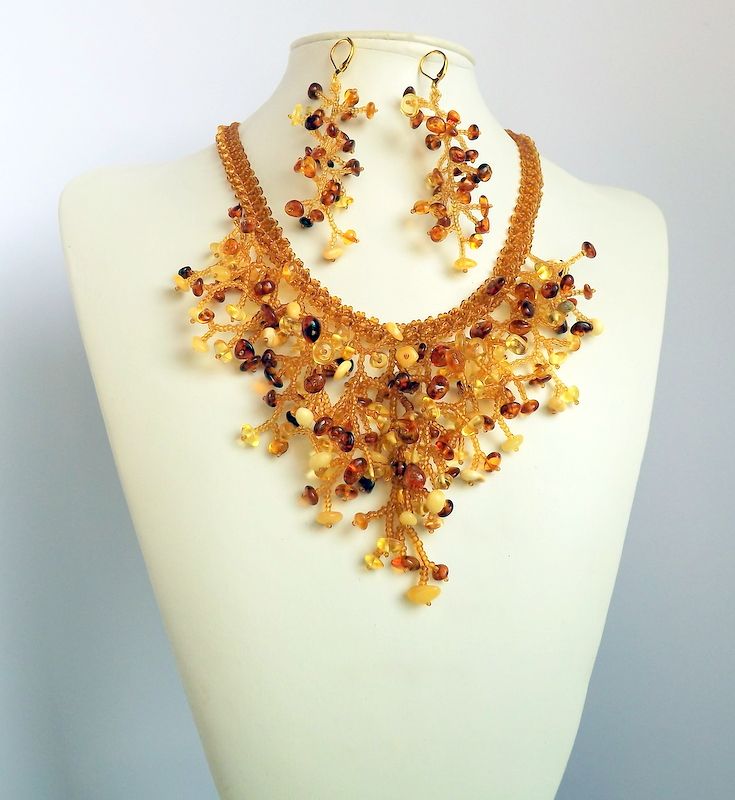
Amber - the power of the sun in every piece
There is an incredible variety of amber classifications. And if at the end of the nineteenth century only six species were distinguished, today there are more than two and a half hundred of them. The main type of division was and remains the type of division according to the place of origin. Scientists have proven that any resin of plant origin, petrified in the depths and more than one million years old, can be considered amber.
Depending on the origin, not only the appearance of the mineral changes, but also its properties, and, accordingly, when choosing beads from natural amber, it is necessary to familiarize yourself with the properties of a particular deposit.
There are three main deposits among all deposits:
- Baltic.
- Ukrainian.
- Dominican.
Amber on the coast of the Baltic Sea is not only the most unique and useful, but also the most numerous.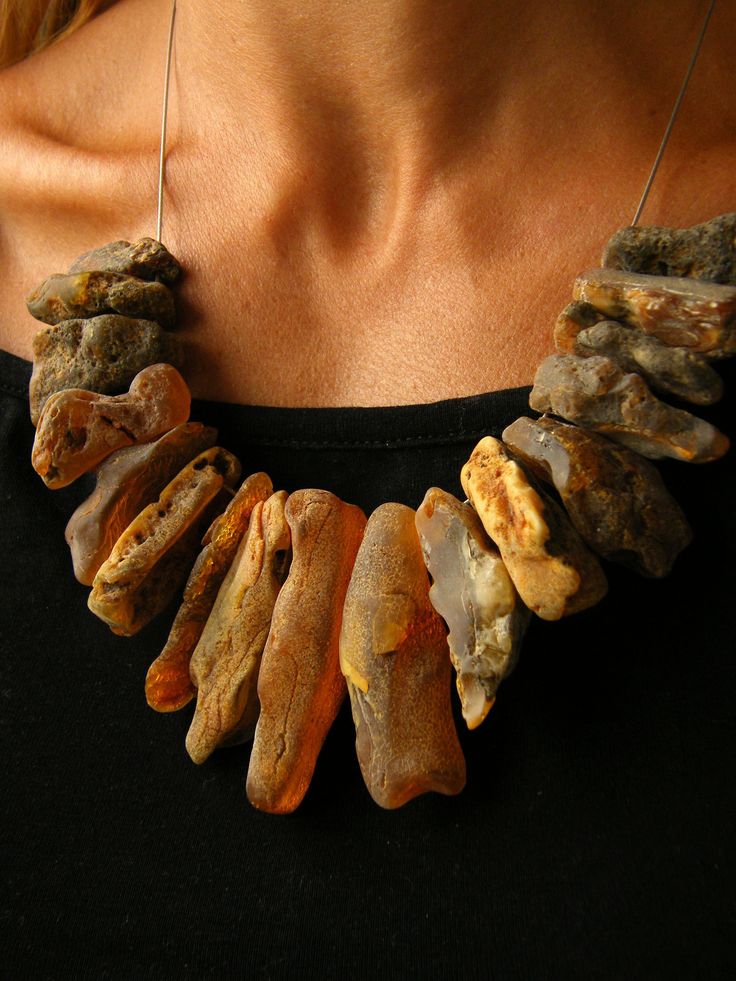 More than ninety percent of the deposits of this unique mineral are located in the Baltic.
More than ninety percent of the deposits of this unique mineral are located in the Baltic.
In turn, unprocessed Baltic amber is subdivided into the following types:
- Succinite is the most common and most beautiful type. It contains the largest large amount of succinic acid, as well as twelve useful chemical elements, in the complete absence of salts of heavy metals.
- Hedanite - differs from succinite in the absence of succinic acid due to the difference in formation conditions.
- Stantienite is a black and fragile type of Baltic Sea amber, the rarest. Formed in an environment saturated with iron.
- Glessite - soft amber contaminated with impurities.
Amber beads - healing properties
It is from Baltic succinite that the best children's amber beads for teething are made, which is due to its unique properties.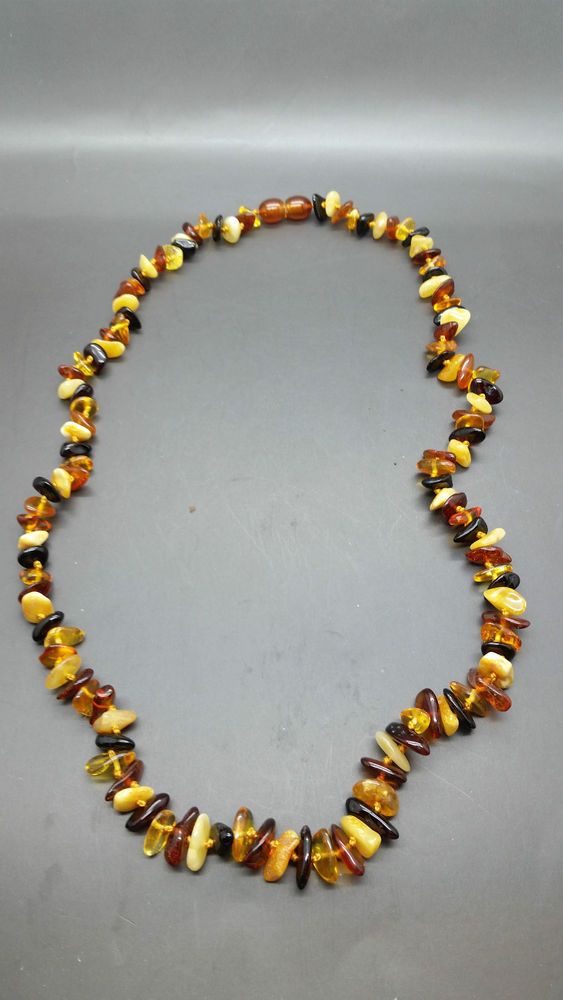 Only it contains from eight percent of succinic acid, which has a healing effect.
Only it contains from eight percent of succinic acid, which has a healing effect.
Robert Koch, Nobel laureate, bacteriologist already at the end of the 19th century proved the extremely beneficial properties of Baltic amber in general, and amber beads for children in particular. Recent studies only confirm his findings.
So, Baltic amber beads:
- Strengthen the body.
- Improve immunity.
- Activate energy processes.
- Normalize the balance of acids.
- Helps fight stress.
Amber - interesting facts
There are many legends around this amazing stone. Many of the facts are simply amazing.
Here are just a few:
- More than one hundred thousand tons of amber was produced by the Paleogene forests on the Baltic coast. This is the largest amber deposit on Earth.
- Baltic amber of the highest quality.
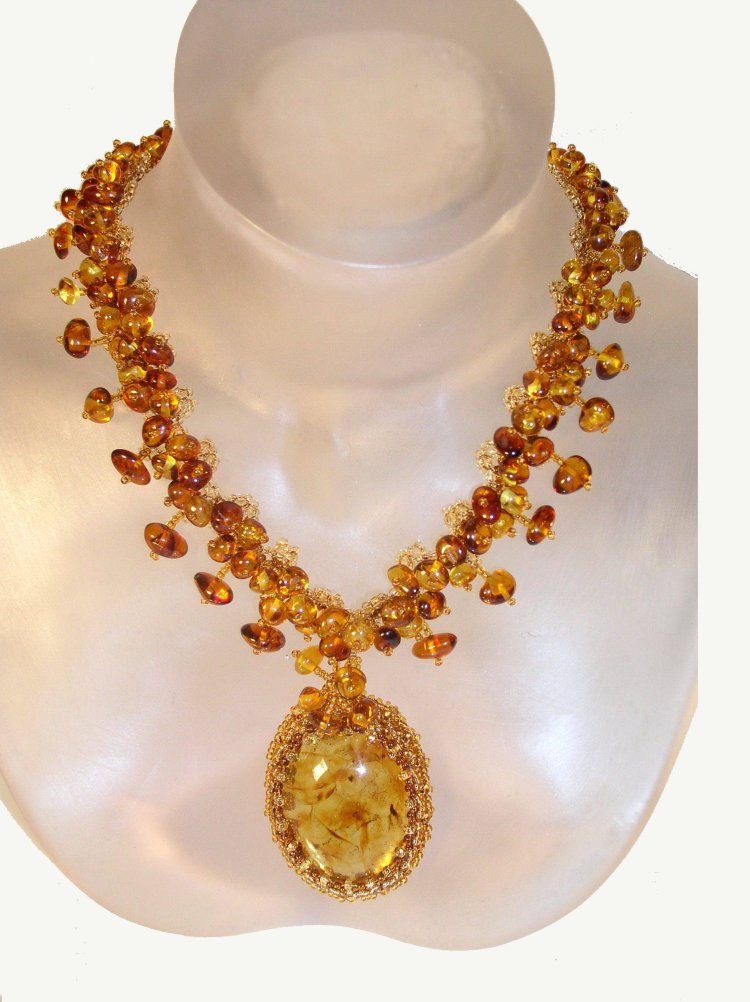 Only it perfectly preserves the anatomical details of fossil insects of any age.
Only it perfectly preserves the anatomical details of fossil insects of any age. - Being chemically unstable, the resin requires very specific conditions to become amber.
- Most of the amber on earth is thirty to ninety million years old.
- Amber - translated into Greek - means electricity.
- Amber has preserved to this day many species of fossil insects, mice, lizards, bones of mammals and birds, skins of snakes.
- More than half of the inclusions in the amber rock are flies, the second place belongs to ants.
- The most unique, simply phenomenal inclusion is the world's only feather of the most ancient tyrannosaurus rex.
- Scientists have not been able to isolate the DNA of fossil insects from the inclusions. Efforts continue to this day.
- Folklore, since ancient times, ascribes to amber many different miraculous properties, from healing to protection from witches and evil spirits.
- Ancient people believed that amber would protect against bad dreams.
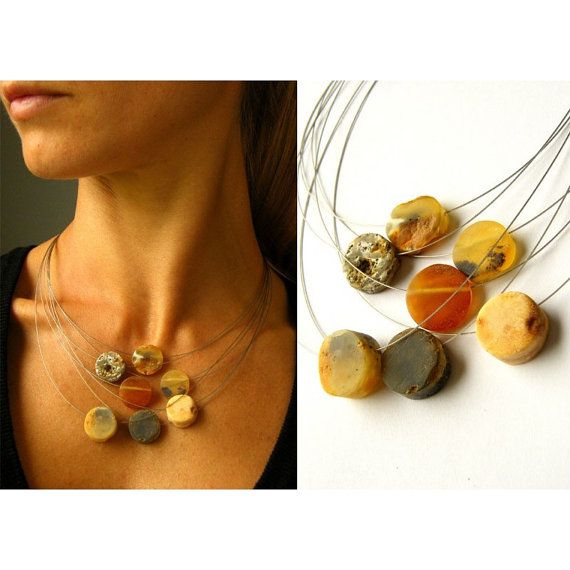
- Long before our era, people used amber in jewelry. The first mentions are found more than eleven thousand years BC.
- Baltic amber was highly revered in ancient Egypt. With its help, the tears of the Great God Ra were depicted.
- The oldest amber ever found is over three hundred and twenty million years old.
- The oldest insect found in amber is 230 million years old. This is a tick.
Baby amber teething beads - how does it work?
Many mothers may have a question, how do amber beads for children actually work during teething? How to use them?
Baby amber teething beads are designed specifically for babies, which determines their design. Beads are strung on a very strong silk thread, after each of which a safety knot is tied so that the beads do not crumble when broken. It also uses a special fastener with a screw mechanism, which prevents accidental unfastening. Each such connection is tested for strength and tear before becoming the element of amber teething beads, which ensures high safety in use.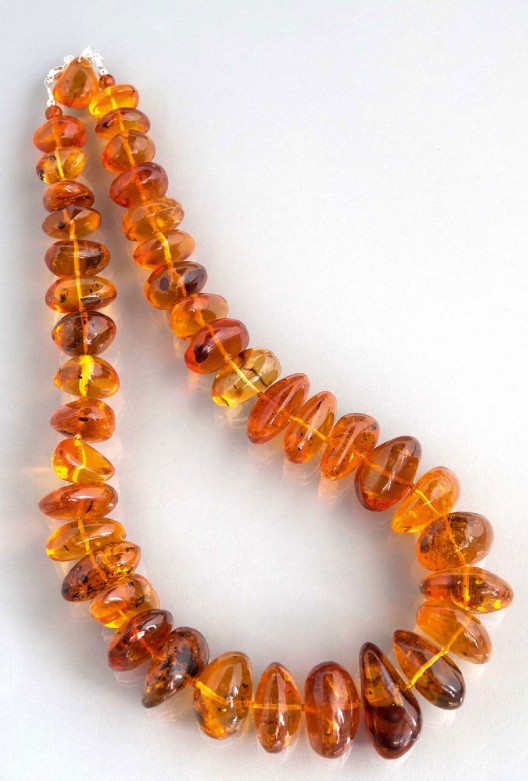
It is worth noting separately that amber healing beads are intended only for wearing. In no case should they be chewed and sucked! This must be strictly followed.
Toddlers use round or oblong beads, making them comfortable and safe to wear. Typically, products are intended for children from three months and older - until the end of teething. The sooner the baby is put on such a useful decoration, the faster he will get used to it, and will not try to take it off or chew it.
So how can amber beads help with teething? Back at the beginning of the last century, biochemists found out that succinic acid contained in Baltic amber products is nothing more than a natural amino acid that helps activate aerobic respiration of cellular tissue, which allows substances to be metabolized into energy. Thus, answering the question of why amber beads are useful, we can safely say that they are able to reduce the negative impact of electrical appliances. Also, since ancient times, amber has been known for its antimicrobial properties. It turns out that with everyday wearing of medicinal amber beads, a small amount of amber oil is released from contact with the skin and absorbed into the blood, which helps to reduce acute symptoms during teething in babies, such as swollen gums, impaired stool, profuse salivation, fever and redness of the cheeks.
It turns out that with everyday wearing of medicinal amber beads, a small amount of amber oil is released from contact with the skin and absorbed into the blood, which helps to reduce acute symptoms during teething in babies, such as swollen gums, impaired stool, profuse salivation, fever and redness of the cheeks.
When using children's amber beads, do not forget the simple rules:
- Beads are worn by a child under the strict supervision of an adult.
- Beans are not allowed to be chewed.
- It is necessary to check from time to time whether the silk thread has worn out. Replace if necessary.
Where to buy amber beads?
Baby amber teething beads can be bought in many places. However, you need to make sure that the seller is reliable. Having decided to buy amber beads in our online store, you can be sure of their authenticity and quality. After all, we are located on the very shore of the Baltic Sea, in the beautiful city of Klaipeda, where the highest quality amber is mined in huge quantities and immediately gets processed.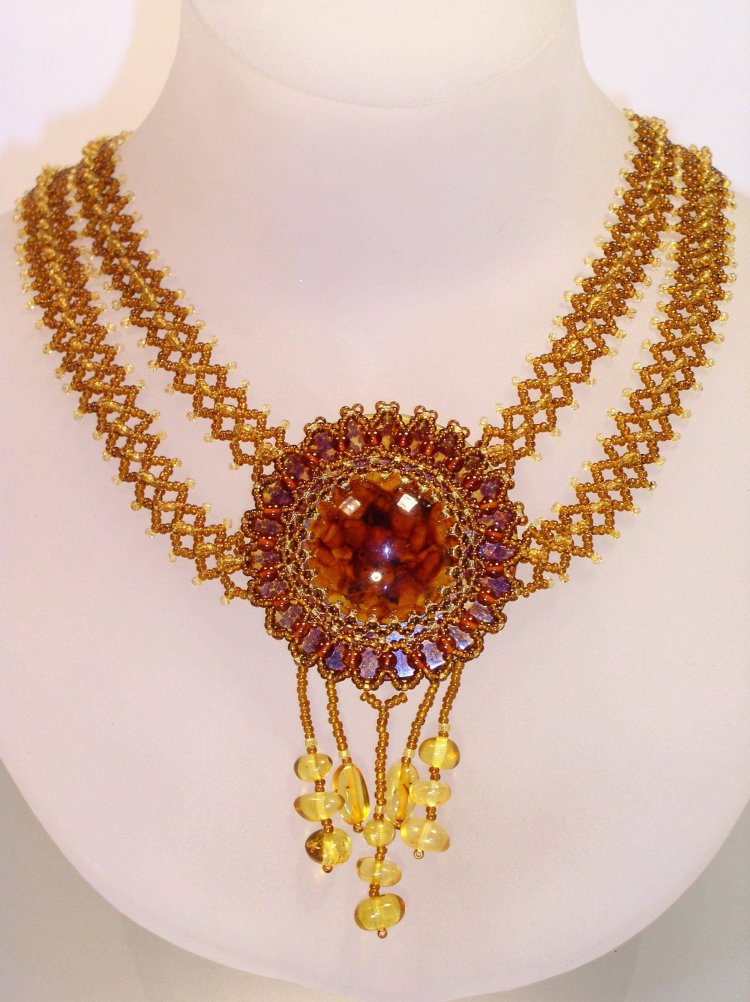 Our company is ready to provide its customers with all certificates and documents for products. Our specialists are waiting for you around the clock for shopping and are always ready to answer all questions related to the purchased goods. We are waiting for you for amber beads - give yourself and your baby calm nights and joyful days!
Our company is ready to provide its customers with all certificates and documents for products. Our specialists are waiting for you around the clock for shopping and are always ready to answer all questions related to the purchased goods. We are waiting for you for amber beads - give yourself and your baby calm nights and joyful days!
4.18 / 5 (28 votes)
Rate the article:
If you liked our article, share it with your friends:
Can the Baltic amber teething necklace get wet?
At the measured time , prolonged exposure to moisture can easily weaken the jewelry thread, making it less effective to use. All in all, there is no paranoid if this happened as a mistake. The amber teething necklace won't suddenly become ineffective once it hits the water.
Can you put Baltic amber in water?
samber can be in water and it will not be damaged.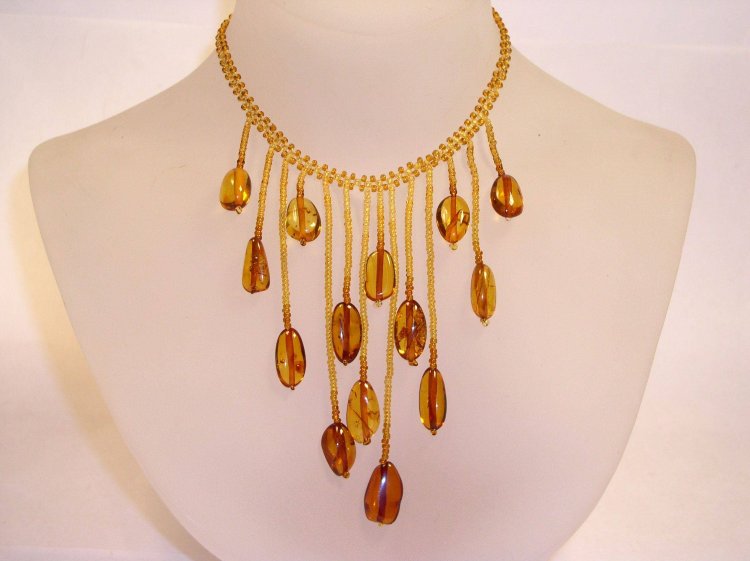 However, many amber jewelry pieces are made from string, clasps from other materials, or contain other gemstones. Extended periods in water can weaken the cord or damage other jewelry components.
However, many amber jewelry pieces are made from string, clasps from other materials, or contain other gemstones. Extended periods in water can weaken the cord or damage other jewelry components.
Can I shower with an amber necklace?
*Never wash, bathe or shower while wearing your amber jewelry . Overtime, water and moisture can destroy the string materials used to build your part and cause it to break.
How long does Baltic amber take?
How long does it take for amber to work? Effects from amber jewelry can start working within a few hours . However, since every baby is different, it may take up to 1-2 weeks for others. Also, the larger the body and the extent of the problem, the longer it may take to see a difference.
Can you wear amber every day?
The main reason for wearing your Baltic Amber jewelry daily is because Baltic Amber simply works best when you wear it regularly. … If you have chronic pain, such as inflammation-based arthritis pain, wearing Baltic Amber jewelry regularly may be the best way to get permanent pain relief.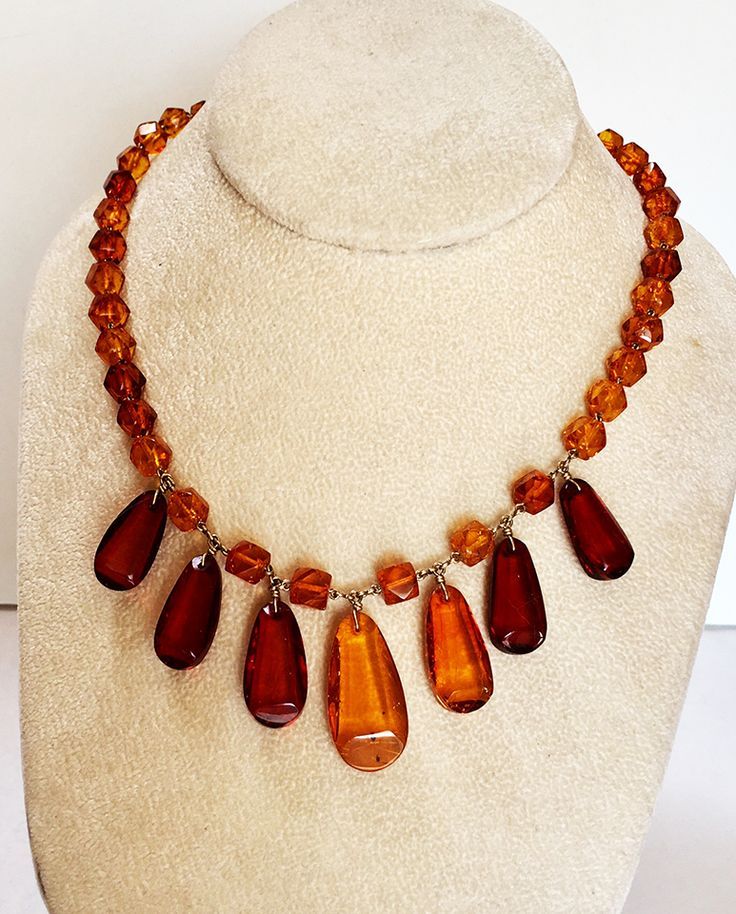
what color amber is most effective?
Overall, There really is no single color that is more effective than the other . Instead, you want to find quality. True amber is composed of 3-8% succinic acid, which is the active ingredient responsible for its anti-inflammatory properties.
.
How does Baltic amber help?
Baltic Amber has been used for centuries for its beauty and for its amazing healing properties. Historically, Baltic Amber has been used to relieve many types of pain, from dental pain, arthritis pain, to swelling and inflammation. It's also helps immune support !
what is the difference between Baltic amber and amber?
This is the presence of succinic acid present in the Baltic amber in the amount of 8%, so the amber from the Baltic region is also called "Succinite", in contrast to the common amber. …
breaks easily?
Simple ways to test amber. There are a few easy ways to test Amber: .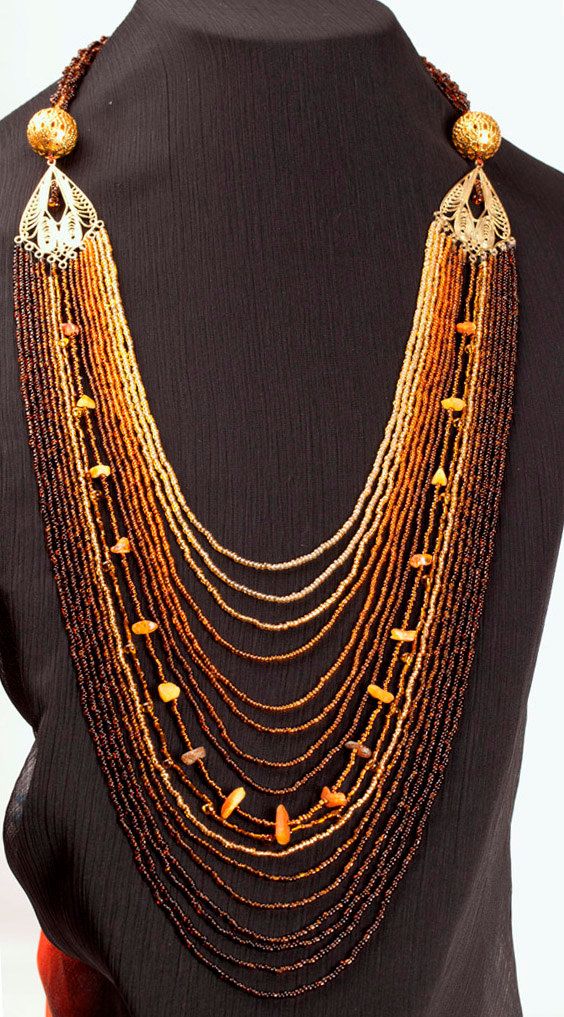 .. real amber won't break or become sticky . There will be no marks on natural amber.
.. real amber won't break or become sticky . There will be no marks on natural amber.
How do you take care of Baltic amber?
Care tips
- Amber is sensitive to direct sunlight, try to keep it away from direct heat. …
- Likewise, your amber jewelry should also be kept away from climatic extremities, as this can also affect the appearance of the amber. …
- Amber should not be in contact with metals, stones and other decorations.
Can amber turn into salt?
Salt Water Test
One of the most popular ways to tell if you have real amber is to do a salt water test. In sea water, amber is a type of swimming stone. … Place an amber stone in salt water mixture . See if the stone or shell is floating .
Why is there so much amber in the Baltic?
Formed over 45 million years ago, Baltic Amber is organic matter , "fossil resin" created by pine trees that grew in northern Europe - from the southern regions of modern Scandinavia and the nearby regions of the Baltic Sea bed.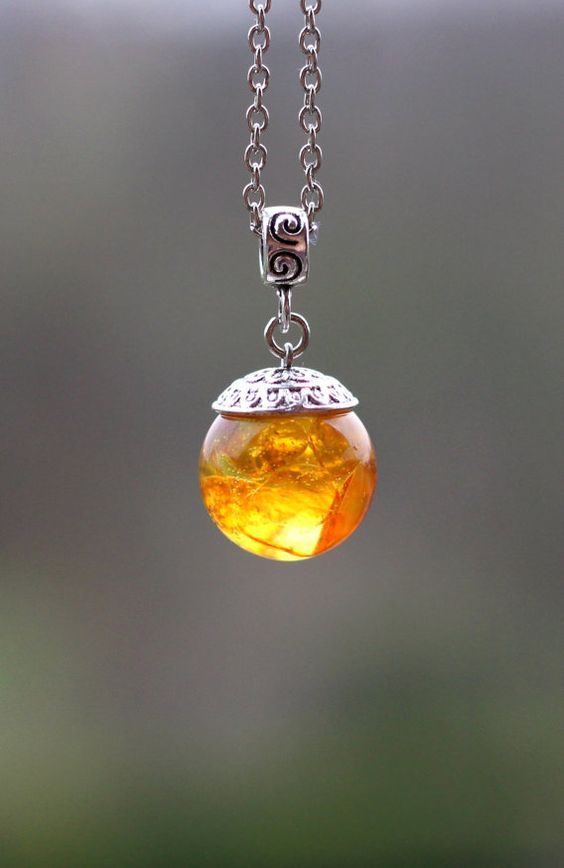 The climate became warmer, and the trees began to emit a large amount of resin.
The climate became warmer, and the trees began to emit a large amount of resin.
Can you wash amber teething necklaces?
To clean your jewelry, first take a bowl and fill it with mild soap and water; Take a soft cloth (such as microfiber) and dip it in soapy water. Gently rub each individual amber bead to remove dirt, debris and give it a fresh look.
What string is used for amber necklaces?
Choose the length of thin nylon or silk lanyard. holes for your beads. For 6mm size 2 cord will be just right.
How can you tell if the Baltic Amber is real?
The Scratch Test - Real Baltic Amber has a hardness of 5 - 6 on the MOH scale, so should be easily scratched by metal. As mentioned above, glass does not scratch. This will damage your amber (if it's real), so try to scratch in an inconspicuous place (kind of hard to do on an already small bead).
Baltic Amber really works?
Do amber necklaces really work? no sorry.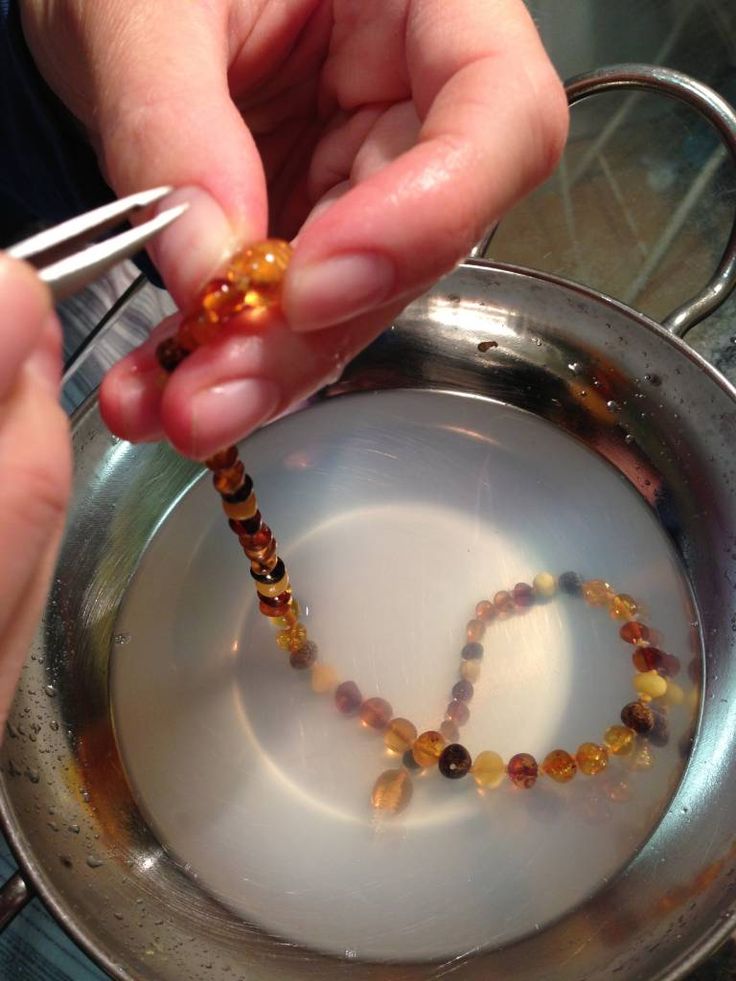 … While it is true that Baltic Amber does contain kritina, there is no evidence that it is absorbed into the skin or that it has any pain relieving properties. In fact, putting one of these necklaces on your child may actually do more harm than good.
… While it is true that Baltic Amber does contain kritina, there is no evidence that it is absorbed into the skin or that it has any pain relieving properties. In fact, putting one of these necklaces on your child may actually do more harm than good.
Is Baltic amber good for you?
The healing abilities of Baltic Amber can do wonders for your children's health as it can offer for children during chest congestion, sore throats, neck pain and headaches. Hence, it is a safe as well as natural alternative to pharmacological medications that can help in relieving teething pain.
at what temperature does amber ejection eject?
Firstly, succinic acid is released only from Baltic amber at very high temperatures - around 200 degrees Celsius (392 degrees Fahrenheit) . Your baby's skin will never be this hot, so nothing will be released from the amber.
what color amber has the most dull acid?
Raw, unpolished amber is how nature intends.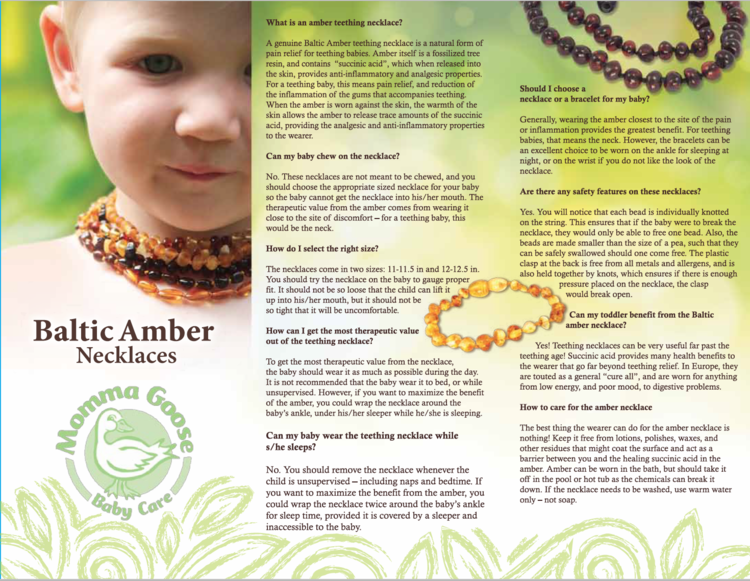 Raw Amber contains the highest levels of succinic acid (up to 8%), which can naturally help suppress inflammation in the body.
Raw Amber contains the highest levels of succinic acid (up to 8%), which can naturally help suppress inflammation in the body.
What is the most expensive amber?
While consumers are most familiar with yellow and gold amber, the gemstone can be white, yellow, and orange to reddish brown. Reddish amber is more valuable than Golden Amber, which is more valuable than yellow amber.
Why do adults wear amber necklaces?
Amber necklaces contain succinic acid; Succinic acid, which actually occurs naturally in our bodies in small amounts, can help with pain and inflammation. … This oil contains succinic acid inside the amber, which is then absorbed into the body. It then acts as an analgesic and anti-inflammatory agent.
is it good to wear amber?
pain relief
But Amber actually has a proven ability to reduce pain and inflammation. … When you wear an amber necklace, it becomes warm because it is close to your body. As the resin warms up, succinic acid is released.
